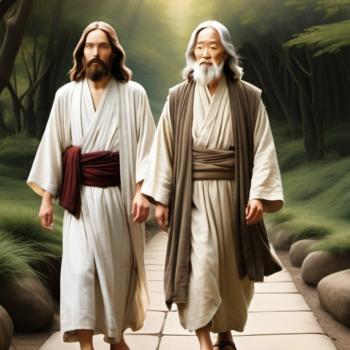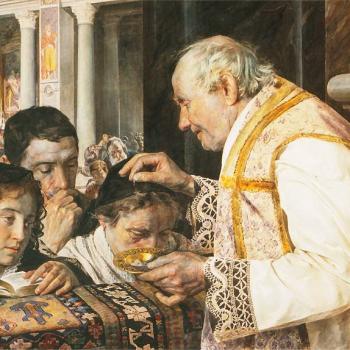Predictably, Max's attachment to his companions (anonymous no longer) makes it impossible for him to simply "sail away into the sunset" as he does in the original. Instead, he must find a solution to the problems of his Wild Things—a solution hinted at in the final words of Sendak's own book, and one which leaves the film's audiences gratified, yet more than a bit wistful.
The first and most obvious question for parents to consider when comparing the appropriateness of Sendak's picture book with the cinematic vision of Jonze and Eggers is the creatures themselves. They're huge. They're wildly unpredictable, emotionally impetuous, and almost hopelessly immature. True, these things may all hold true of Sendak's original creations, but the living, moving, breathing representations of his images—lovingly and carefully crafted by Jim Henson's Creature Shop—could be a bit overwhelming for young audience members. Still, the Wild Things are more endearing than threatening, and the additional screen time awarded to them as a result of the film's length proves more than sufficient in eliminating the trepidation that arises from their first appearance on screen.
Yet this additional material is a double-edged sword; while eliminating many of the concerns regarding the Wild Things themselves, it also provides the film's worried critics with their greatest ammunition. For in addition to creating (potentially problematic, complex) motivations and back-stories for the herd of Wild Things, Jonze and Eggers make a carefully thought-out yet dramatic change—one that may fit snuggly into their extension of Sendak's original vision, but one which so radically alters the parameters of their project that the question of whether the resulting story is appropriate for young audience comes once again into play: they tell us why Max is angry.
In Sendak's original work, the reason for Max's anger is attributed largely to the natural rambunctiousness of youth and to an unfortunate tendency toward lippiness on the youngster's part. In the film, however, causes for his anger abound: his absent father (either by death or divorce), his sister's studied indifference (and the casual dismissiveness of her friends), his mother's newly-acquired boyfriend and the embarrassment-fueled punishment she visits upon his misbehavior—all paint a far darker picture of Max's past than Sendak's vibrant illustrations and minimalistic prose could ever have done.
This troubling context is made even more explicit by the film's clear suggestion that the various Wild Things personify Max's own conflicting emotions. Carol, the first and dearest of the creatures, is eerily similar to his young king; when he lashes out in anger, he uses the very expressions employed by Max during his explosive confrontations with his mother and sister. Alexander, a faun-like Thing who barely appears in Sendak's original work, is a loner and an outcast who laments the lack of interest and affection shown by his peers. At heart, each of the Things is a damaged, distilled Max—a fact which graces his efforts to "make everyone Okay" with a new and deeper meaning, and renders his eventual solution even more bittersweet.
At its heart, Sendak's story is an occasionally unsettling examination of something many of us have experienced (but few of us care to remember): the anger and frustration that can so often accompany childhood. Yet his work does not give the reasons behind Max's anger, only the consequences, and the result is a story that can be appreciated by audiences of any age.
The film, by delving into the story behind Max's behavior and those of his huge, furry friends, eliminates much of the mischievous charm of its source material; the childlike exuberance which permeates the picture book is largely absent in Jonze's work because the audience knows too much about Max and his Things. Where the Wild Things Are is inappropriate for children because it's sad, not because it's scary—sad about things and emotions which they cannot possibly begin to understand.
Yet despite its challenging subject matter, the film offers an important reminder to those willing to embrace its darker moments. Max's hot-headed departure and his chastened return remind us that anger does not exist in a vacuum; that "mischief of one kind or another" is often the manifestation of some deeper sadness; and that our ability to help Max and others like him will depend on our willingness to understand the emotions and motivations behind their actions. Yelling "You're out of control!" in response to bad behavior will rarely prove fruitful; understanding why they have lost control almost certainly will.
Despite Sendak's fervent protestations to the contrary, the film is not for young audiences. It is, however, "for the children." And for that, those of us tasked with guarding the health, happiness, and even the anger of our little ones can be grateful.





